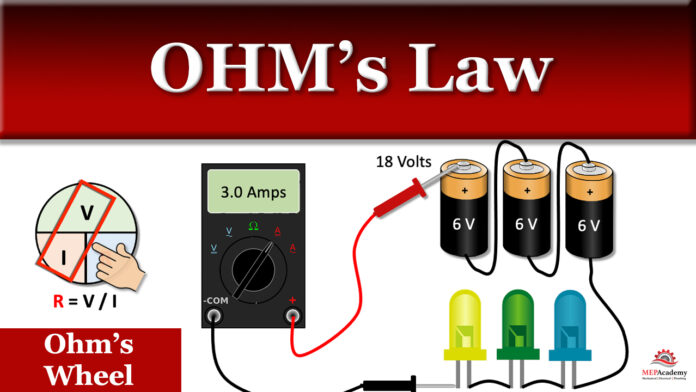Learn how OHM’s Law Works, and how to use it to solve problems.
To watch the FREE YouTube version of this presentation, scroll to the bottom.
What is Ohm’s Law
There is a relationship between Voltage, Current and Resistance that is easily explained using Ohm’s Law. The German physicist by the name of Georg Ohm develop the theory that we are going to explain here.
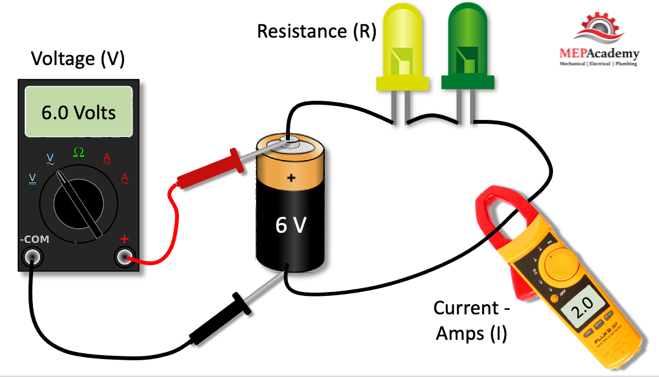
We can calculate any of the three factors that make up the OHM’s law, if we have any two of the factors. Here are the three versions of the formula.
Voltage (V) = Current (I) x Resistance (R).
Current (I) = Voltage (V) / Resistance (R).
Resistance (R) = Voltage (V) / Current (I).
OHMs LAW WHEEL
The formulas are easily remembered by using the Ohm’s Law Wheel. You may also see version of this using a Triangle.
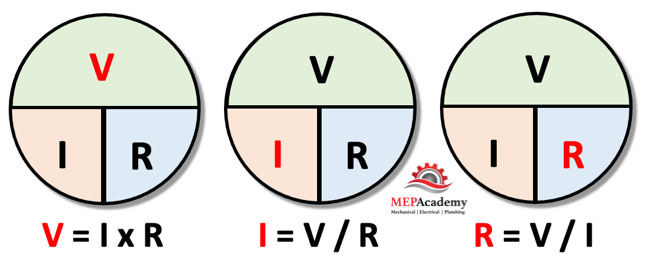
Each of the three formulas is represented by one of the three wheels, with the product were trying to solve colored red. All you have to do is cover the red letter or the letter that you’re trying to solve for. For example, if you cover the “V” for voltage, than you’ll only see the Current (I) and Resistance (R). When the letters are side by side you multiply, when the “V” voltage is over any letter, than you divide into the voltage.
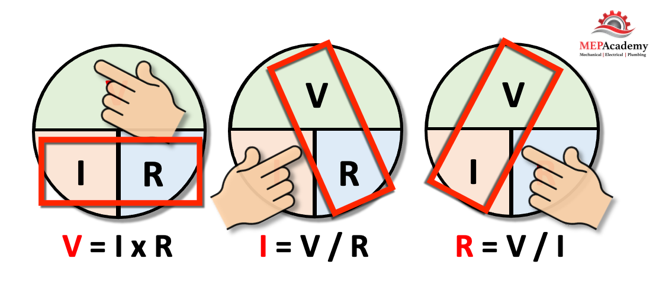
Just cover up the letter you want to solve for, and the formula will reveal itself.
Solving for Amps
Using a digital meter, we can determine how many amps are flowing through a circuit like this here.
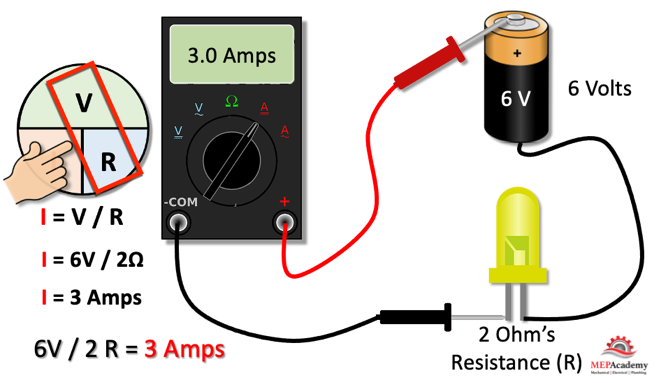
If we cover up the (I) of the Ohm’s wheel with an effort to solve for the amps or current flowing through the system, we can see that the two known values of 6 volts and 2 ohms of resistance work perfectly within the formula. This gives us 6 volts divided by 2 ohms = 3 amps.
Doubling the Voltage
By putting batteries in series, you add up the total of the voltage. As shown in the example here, the two 6-volt batteries in series equal 12 volts.
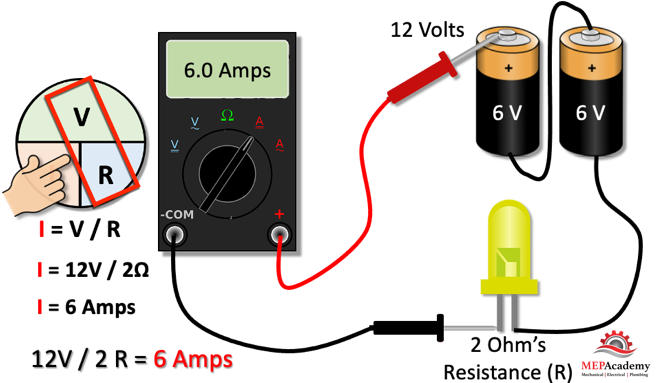
By doubling the voltage and keeping the resistance the same, we have effectively doubled the amps. We now have 12 volts divided by the same 2 ohms of resistance to get twice as many amps as previously, 6 amps instead of 3.
Remember since voltage is always in the numerator position, anytime you increase the voltage there will be an increase in amps if the resistance stays the same.
Doubling the Resistance
By doubling the resistance and keeping the voltage the same, we have effectively cut the amps in half.
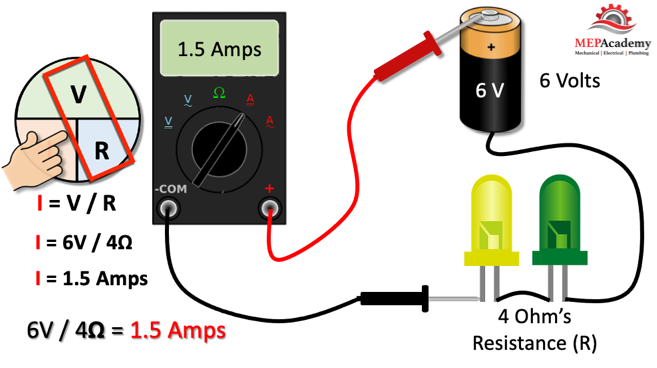
The current or amps are inversely related to resistance. As resistance goes up, the current goes down, and vice versa, as the resistance in Ohms decreases, amps will increase in the circuit.
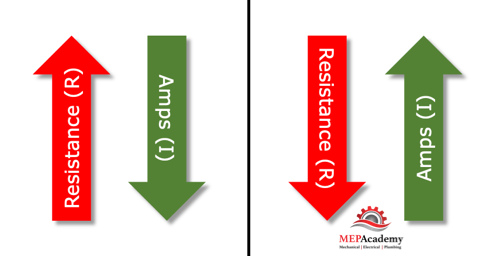
Solving for Resistance (Ohms)
To find the (R) resistance in a circuit, cover up the “R” in the Ohm’s wheel and enter the two known values of Voltage (V) and Amps (I).
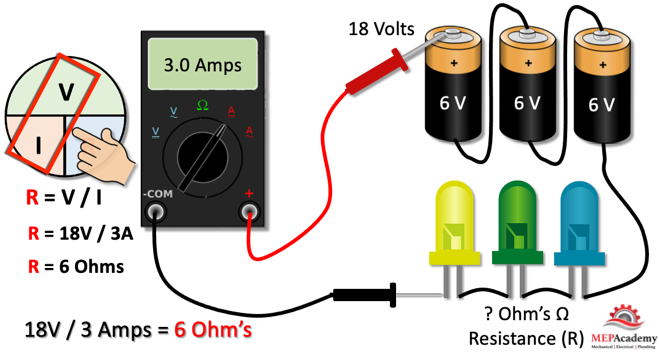
By knowing the voltage and measuring the amps flowing through the circuit we can determine the resistance. There are three 6-volt batteries that are equivalent to 18-volts, plus the digital meter reads 3 amps. With these two values we get 18-volts divided by 3 amps equals 6 Ohms.
Solving for Voltage
Solving for the voltage requires knowing the value of the resistance and the current. Using a digital meter, the amps can be determined. With this we enter the resistance and amps into the formula to discover the voltage.
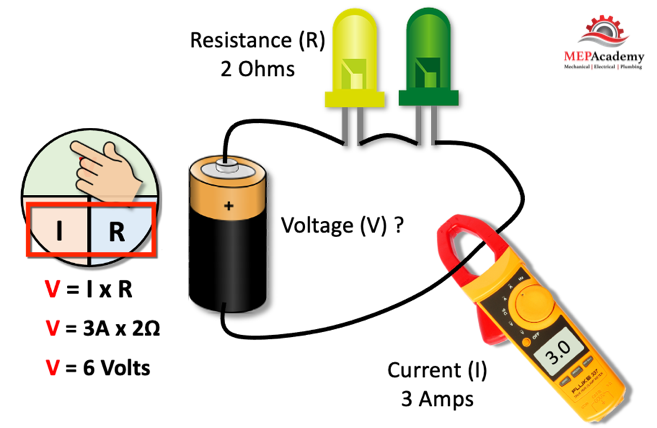
Voltage is the force that pushes the amps through the circuit while ohm’s provide resistance to the current flow.
Other ways of Measuring
Remember there are other ways to determine the voltage, current and resistance in a circuit, but this presentation was meant to demonstrate the use of Ohm’s Law.
Voltage can be determined directly by connecting to the terminals of the batteries using a multi-meter.
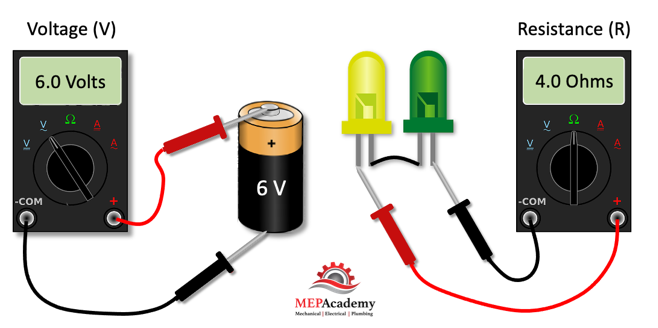
Measuring Resistance can be done with the same digital meter by setting the meter to read ohms and setting the two probes on each side of the resistor. The multi-meter has an internal battery that sends a current through the resistor.
Measuring Current or amps can be done as shown above or by using a clamp on type of amp meter that isolates a wire. Instead of being connected in series with the circuit the amp probe encompasses the wire. These clamp on meters can measure both AC and DC current.



